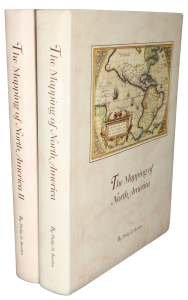Rare Maps and Prints
- World & Celestial
- North America
- West Indies, South & Central America
- British Isles
- British Isles
- English counties
- Large-scale
- Bedfordshire
- Berkshire
- Buckinghamshire
- Cambridgeshire
- Cheshire
- Cornwall
- Cumberland
- Derbyshire
- Devon
- Dorset
- Durham
- Essex
- Gloucestershire
- Hampshire
- Herefordshire
- Hertfordshire
- Huntingdonshire
- Islands
- Kent
- Lancashire
- Leicestershire
- Lincolnshire
- Middlesex
- Norfolk
- Northamptonshire
- Northumberland
- Nottinghamshire
- Oxfordshire
- Rutland
- Shropshire
- Somerset
- Staffordshire
- Suffolk
- Surrey
- Sussex
- Warwickshire
- Westmoreland
- Wiltshire
- Worcestershire
- Yorkshire
- Wales
- Scotland
- Ireland
- Western Europe
- Eastern Europe
- Middle East
- Africa
- Asia
- Australasia & Pacific
- Decorative Prints
- Title Pages
Mr. Philip D. Burden
P.O. Box 863,
Chalfont St. Giles, Bucks HP6 9HD,
UNITED KINGDOM
Tel: +44 (0) 1494 76 33 13
Email: enquiries@caburden.com
Basilius Besler’s ‘Hortus Eystettensis’ is generally considered to be one of the most important and most beautiful florilegia ever published. It was commissioned by the Prince-Bishop Johann Conrad von Gemmingen in 1606, whose castle overlooked Eichstatt, a town to the south of Nuremberg. The garden was begun by Joachim Camerarius the younger (1534-98) in 1596 and was completed by Basilius Besler, a pharmacist from Nuremberg who also owned a fine garden and a collection of scientific curiosities. Within a few years the gardens of Eichstatt had become one of the most renowned in Europe.
Instructed by Gemmingen in 1606, Besler enlisted the aid of two collaborators in the compilation of a vast and ambitious catalogue or florilegium – his younger brother Hieronymus (1566-1632) and Ludwig Jungermann (1572-1653), nephew of Camerarius, who taught natural history at the University of Altdorf. Hieronymus helped Besler to write the Latin text, while Jungermann perhaps assisted in the preparation of the botanical descriptions. Several of the original drawings for the plates survive today in the library of the University of Erlangen, and were apparently executed by Besler himself. The dedication to the book states that he was the author of many of them. The task of engraving the hundreds of magnificent plates took many years. Barker (1995); Hunt (1958) 430 (1713 edition); Nissen BBI (1966) 158; Oak Spring Flora (1997) pp. 52-7; Pritzel (1950) 745; Stafleu & Cowan (1976-88) 497.
BESLER, Basil
Ononis luteo flore
Ononis luteo flore (decorative print)
Eichstatt, 1613
c. 18.5 x 15.5 inches, modern gouache colour, copper plate engraving. Plate 263.
Stock number: D1648
SOLD



